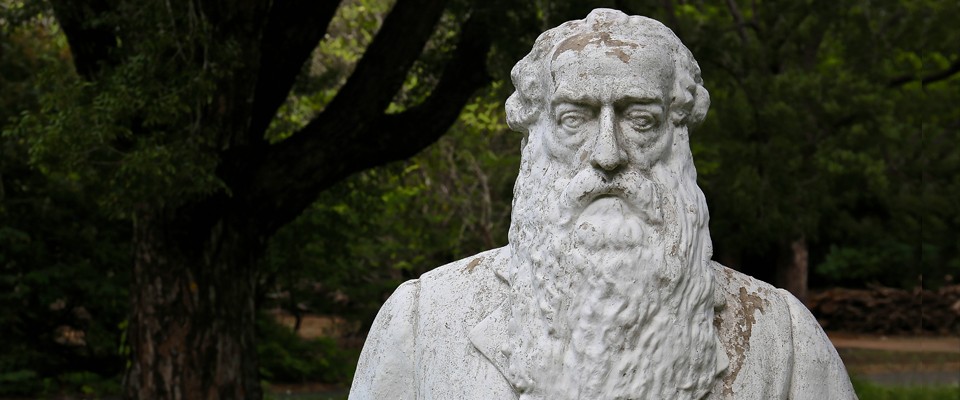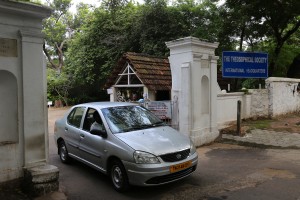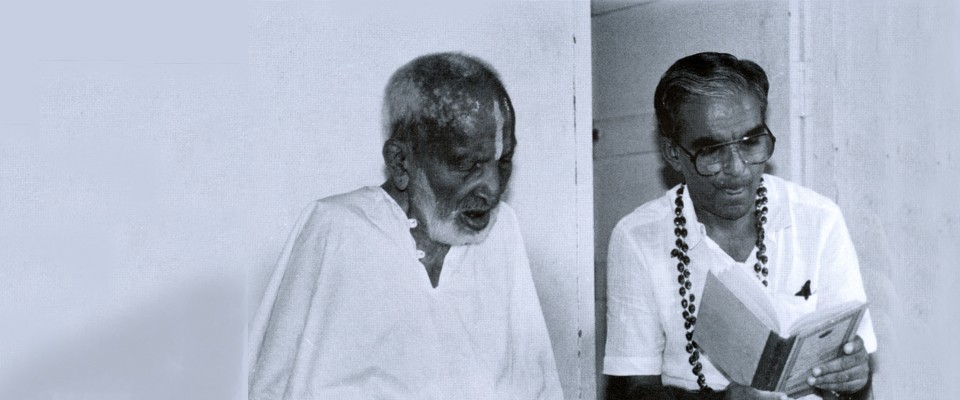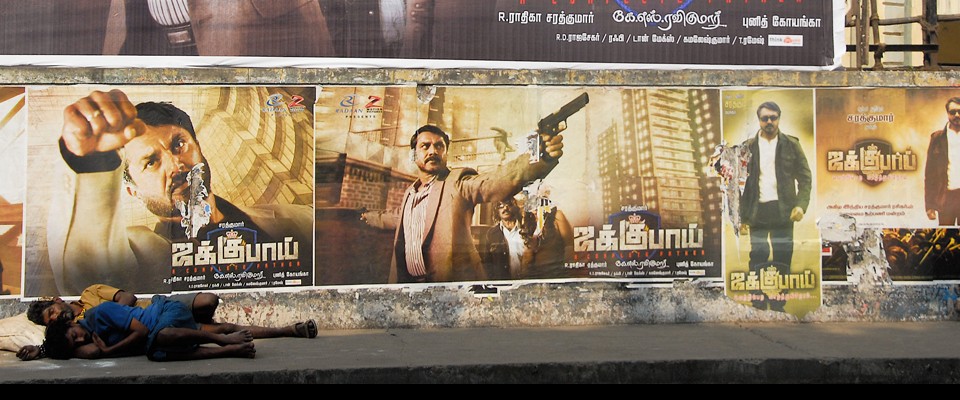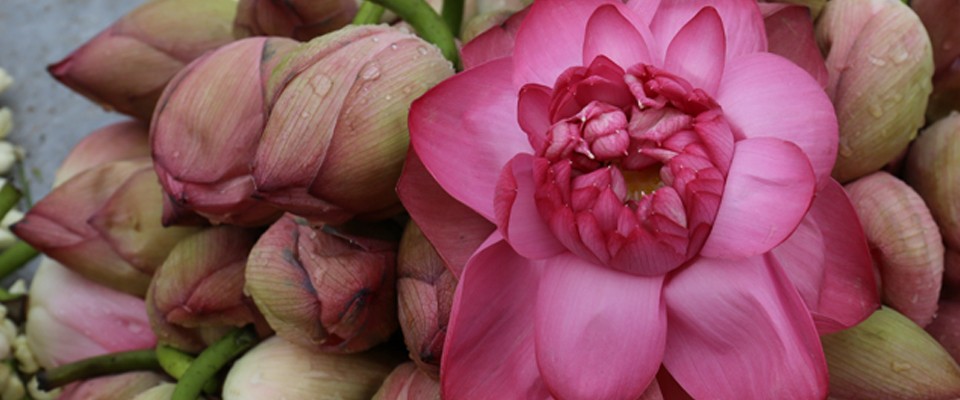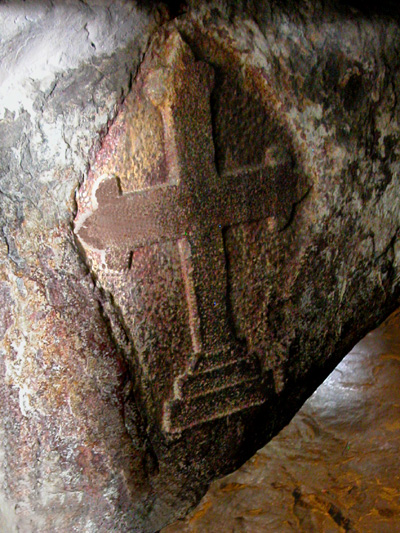Sri T. Krishnamacharya, one of the greatest masters of yoga, the light of his knowledge has profoundly influenced the whole world.
He has never left anyone indifferent. In the course of a life that would easily fill several ordinary lives, he had many extraordinary encounters. A descendant of the great priests serving at the temple of the Lord of the Seven Hills, who in turn were descendants of Nâthamuni, Sri Venkateshvara of Tirumalai, this teacher had been promised an exceptional destiny at his birth. Nothing commonplace could happen to him.
Sri Tirumalai Krishnamacharya was born on 18 November 1888, the eldest of six children (four boys and two girls).
His father, Sri Tirumalai Srinivasa Thathacharya, a great religious master teaching the knowledge of the holy books (the Vedas), takes charge of the child’s education with his wife Shrimati Ranganayakamma.
The young Krishnamacharya is gifted with great physical force, coupled with extraordinary temperament and intelligence. He also suffused with an intense ardour to know and… to know how.
Still an adolescent, Krishnamacharya sets off to discover his country, its sages, its scholars, its artists and its mystics.
An incredible journey is the life of this young man who will by and by discover, then master, the most varied disciplines, from close-quarters combat to astrology to Vedic rituals.
A well of sciences, fluent in seven languages, an eminent pundit, he will successively explore each of the classical viewpoints of Indian philosophical thought, obtaining the highest distinctions in the most celebrated traditional schools.
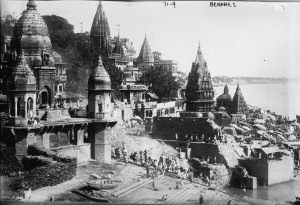
Benares, Varanasi, India in 1922
Varanasi
When he left for Benares for the first time, around the age of 18, he was fortunate to be instructed in certain secrets of Sanskrit grammar in the course of a single night by a sort of genius, Shivakumar Shâstri. Back in Mysore, he received an exhaustive three-year education in the philosophy of Vedânta by the director of Parakala Mutt, Brahmatantra Sri Krishna Brahmatantra Swâmi. Once again back to Benares, he found there a deeply enlightened tutor, Sri Vamacarana Bhattâchârya who, while teaching him philosophy, alsohelped him for years giving him advice on how to live his life.
The holy lake of Mânasarovar…
As advised by his tutor at the University of Patna, he then set off on foot for the Himalayas. By difficult paths and rope bridges over spanning torrents, he arrived at the foot of Kailash, the mythical mountain considered to be the abode of Shiva and the axis of the universe, and at the holy lake of Mânasarovar.
Yoga
He learns and practices intensively all the different aspects of yoga. Thus, in the second phase of his life, he will become one of the greatest (Maha) yogi (âcharya) of his time.
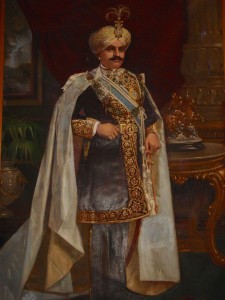
Maharaja of Mysore, painting
The maharajah of Mysore
In 1924, he is invited by the maharajah of Mysore who viened yoga as a help in treating his numerous physical ailments. He opened a yoga school in his palace in 1955.
He established himself in Mysore
He is already in his forties when he established himself in Mysore, in the South of India, there he marries the very young Srimati Namaginammal. She will give him six children, three boys and three girls.
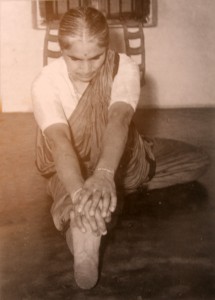
Srimati Namaginammal wife of Krishnamacharya
Madras (Chennai)
When he established himself in Madras in the fifties, he once again had the opportunity to treat two men in very senior positions. Both suffered from paralysis: an eminent lawyer Sri T.R. Venkatarâma Shâstrî and Sir Alladi Krishnaswâmi Iyer, the celebrated jurist who had participated in the drafting of the Indian constitution. Both, causing him stay Madras, added themselves to the long list of crucial encounters that influenced the course of his life. (Extract of N° 24 of Viniyoga, dedicated to the 100th anniversary of Sri T. Krishnamacharya).
The legend of Yoga-Rahasya
Of the Yoga-Rahasya, an important work on yoga that had been lost for several centuries, only a few excerpts were known. Krishnamacharya declared having received the whole of this original teaching in a dream from the mouth of Sri Nâthamuni, this Vishnu saint who lived in the 9th century
It was not until 1965 that T. Krishnamacharya wrote the verses of Yoga Rahaysa down on paper.
The important concepts of this text are:
- The importance of yoga for women
- The yoga practices to follow during pregnancy
- The adaptation of yoga to make it suitable for everyone in different stages of his life
- Yoga is an essential therapeutic tool
It contains the main ideas of the teachings of Krishnamacharya on techniques such as āsana and Prāṇāyāma.
T.K.V. Deskachar & Shri Bhashyam
Two of their sons also became yoga instructors.
The elder one, T.K.V. Deskachar, lives in Madras, and manages an important yoga therapy centre – the Krisnamacharya Yoga Mandiram – officially recognized by the Health Ministry of Tamil Nadu.
Sri Bhashyam, his pupil, lives in Nice (France). He has married a Frenchwoman and teaches yoga mainly in France and Switzerland – Yogakshemam, a school teaching traditional Indian philosophy – Ayurveda and Yoga.
Dissemination…
Compared to the occident, the dissemination of the teachings of T. Krishnamacharya incurred a strange fate.
- Indra Devi
- Yvonne Millerand
- K.V. Desikachar
- K. Sribhashyam
- Sri B.K.S. Iyengar
- Sri K. Pattabhi Jois
Mainly due to the engagement of his two sons and their pupils, it is firmly rooted in French speaking countries (France, Switzerland & Quebec).
In Anglo-Saxon countries, this teaching is better known through the interpretation provided by his brother-in-law and pupil, B.K.S. Iyengar with his worldwide reputation – as well as that of Sri K. Pattabhi Jois, also known worldwide.
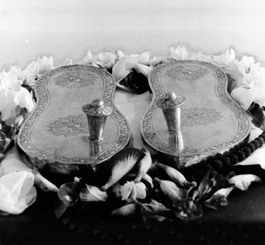
His death
He died on 28 February 1989 in Chennai in the South of India. He was nearly 101 years of age. The teacher Sri T. Krishnamacharya will for many remain an unmatched and irreplaceable master of yoga…
In accordance with tradition, he never left his native India in his life. Nevertheless, the light of his knowledge of yoga has profoundly influenced the whole world.
“Yoga is the greatest gift of India to the world.”
Sri T. Krishnamacharya
Sources:
- The Yoga of the Yoga The legacy of T Krishnamacharya by Kausthud Desikachar – Edition: K. Y. M – Chennai – India
- Shri T. Krishnamacharya 1888 – 1988 Cent ans de Béatitude
- Notebook
Edition: K. Y. M – Chennai – India
- La revue « Viniyoga » n° 24
- Yoga Sutra de Patanjali – Translation and commentary by K.V. Desikachar – Edition du Rocher – 1986
- Reflection on Yoga Sutra – s of Patanjali – By K.V. Desikachar
KYM – ISBN: 81.87847.20.4
- The Heart of Yoga – Developing a Personal Practice – By K.V. Desikachar
KYM – ISBN: 0.89281.681.3
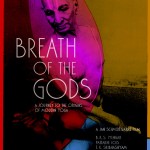
Breath Of The Gods
Film:
Breath of the Gods, A Journey to the Origins of Modern Yoga, by Jan Schmidt – Garre Film – Length 105 minutes
- K.S. IYENGAR
- PATTABHI JOIS
- K. SRIBHASHYAM
- KRISHNAMACHARYA
Very beautiful and moving testimony to the life of Sri T. Krishnamacharya as recalled by his students, his children…
Websites:
